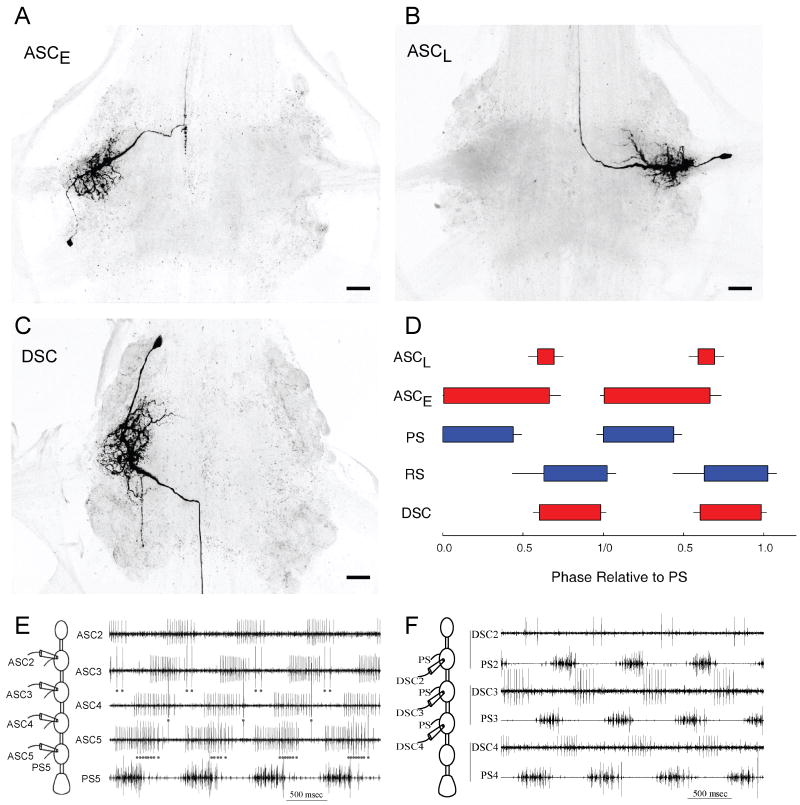Fig. 7.
Swimmeret coordinating neurons whose axons project dorsally from the LN toward the midline and then project into the interganglionic connective. Confocal images of whole mounts of three different ganglia, viewed from the dorsal side with anterior at the top. (A) An ASCE neuron in ganglion A4. (B) An ASCL neuron in ganglion A4. (C) A DSC neuron in ganglion A2. (D). Box plots that illustrate the timing of bursts of spikes in different neurons during two cycles of swimmeret motor output from one module (Mulloney et al., 2006). Each cycle begins with a burst of spikes in PS motor neurons. Each box shows the mean phase at which the neuron's burst began and its mean duration. Right error bars show Standard Deviation (SD) of these durations. Left error bars show SD of phases, except for PS bursts which show SD of normalized period. (E) Simultaneous extracellular recordings from ASCE and ASCL neurons originating in ganglia A2 through A5, and from the PS branch of N1 in ganglion A5 (Fig. 2). Four cycles of activity occur, marked by the four PS5 bursts. ASCE5 bursts begin simultaneously with each PS5 burst. ASCL5 start later in each cycle; each spike is marked by a dot. In each more anterior module, the two ASC neurons that arise there fire a burst that is delayed by the same amount as the PS burst in that module (Fig. 2). In more anterior ganglia, the numbers of ASCE spikes per burst are smaller than in A5 or A4. In this recording, ASCL in A2 was silent. (F) Simultaneous extracellular recordings from DSC neurons originating in ganglia A2 through A4 and from the PS branch of N1 from the same ganglia. In each ganglion, bursts of DSC spikes alternate with each PS burst. In more anterior ganglia, the numbers of DSC spikes per burst are smaller than in A4.

